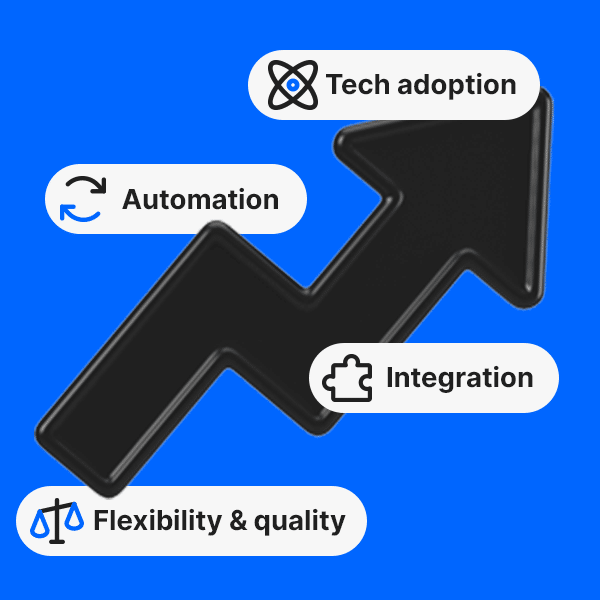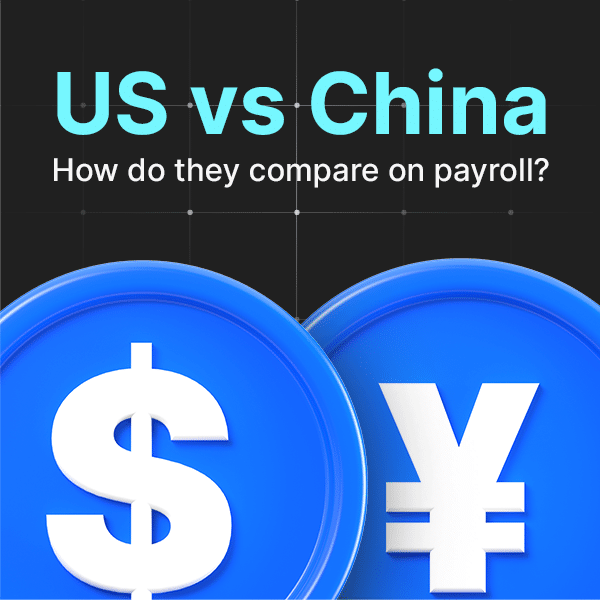One of the main reasons CloudPay started the Global Payroll Efficiency Index is that traditional payroll KPIs simply weren’t providing the insight modern organizations need. If your payroll systems are running at 99.9% accuracy, but you’re still having issues with your global payroll operations, then this applies to you in particular.
SLAs around timeliness and accuracy don’t tell the real story about how a payroll run is operating, and don’t highlight many of the hidden inefficiencies, manual workarounds and complexities that often get in the way. And with the use of global payroll automation becoming more and more commonplace, digging deeper under the surface is becoming more and more important.
Indeed, automation is leading us at CloudPay to evolve our own advanced payroll KPIs even further, so that our measurements of payroll performance remain up-to-date and relevant in a fast-changing landscape. Here, we’ll explore the key changes we’ve made to some of our KPIs in this year’s PEI report, why we’ve changed them, and what this means for you.
Why CloudPay’s KPIs needed to evolve
The automation revolution has transformed payroll processing, to the point that traditional metrics and measures are no longer fit for purpose. There are several reasons for this – the old KPIs were designed around a system based on:
- Manual data entry and validation processes which are now largely automated through automated payroll systems with data capture and real-time validation
- Static monthly reporting cycles rather than continuous real-time monitoring
- Reactive problem-solving, now superseded by predictive analytics and proactive issue resolution
- Siloed payroll operations rather than unified payroll-to-payment workflows
At CloudPay, we’ve found it especially important to move away from these old KPIs and streamline our measurement approaches. This is thanks to a range of new automation implementations in our payroll software, including automated validation through data import and anomaly detection, processing innovations like auto-approval and bulk payslip generation, and enhanced insights through dashboard enhancements.
In the context of the annual PEI report, where payroll performance is benchmarked and tracked at global, regional and national levels, these KPIs also had to change to keep insights relevant and reflect these technological advances.
CloudPay’s response: Real-time KPI evolution
The PEI report routinely features five advanced payroll KPIs. In the recently released 2025 edition (which covers data collected throughout 2024), two of these indicators have been evolved:
- Data input issues (DII): previously, this metric covered the proportion of payroll issues caused by data input out of all issues; now, it tracks the average number of data-related issues per payslip. This change reflects the move towards real-time automated payroll data capture and instant reporting, where issues can be identified and assessed at a more granular level on individual payslips.
- Issues per 1000 payslips (I/1000): the measurement of this metric remains the same – what’s changed is the use of automated reporting systems to detect issues in real time rather than through post-process analysis. As this has fundamentally changed the accuracy and actionability of the data, it means that the ‘new’ results can’t be fairly compared to the ‘old’ ones from previous years.
These changes are the result of CloudPay’s enhanced automated systems, and highlight some emerging priorities for the global payroll industry as a whole. It has become essential to measure payroll metrics in real-time, at a granular level that goes beyond simple error rates, and to use automation to enable greater transparency and control.
The results from the report, including the evolved KPIs, bear this out. While payroll efficiency improved across the board, the global rate of first-time approvals (FTA) actually declined. This is thanks to automation freeing up more time for payroll professionals to validate and check payrolls before they’re submitted, spot issues for remediation at a much earlier stage than before, and navigate the increasingly complex global compliance landscape.
The technology behind the transformation
The introduction of real-time data capture and remediation, combined with CloudPay’s comprehensive suite of automation capabilities, have led to major changes in the flow of a payroll cycle. Four key areas have been particularly affected:
- Implementation: self-onboarding capabilities that have reduced manual set-up and admin
- Validation: automated data importing, pre-process validations and anomaly detection all help catch issues before they have a chance to affect payroll runs
- Processing: smoother, faster processing for every payroll run, supported by auto-approval systems, payroll lock and close automation, bulk payslip generation, and intelligent PDF splitting
- Insights: greater information from payroll, powered by enhanced dashboard capabilities, beta trials of payment dashboards, and AI-powered analytics
All these have combined to make payroll management a more fluid process of constant operation, that isn’t completely fixed to a set cycle each week or month. This means more sophisticated, real-time measurement of performance can deliver greater insight than traditional end-of-cycle reporting while reducing human error through automation.





